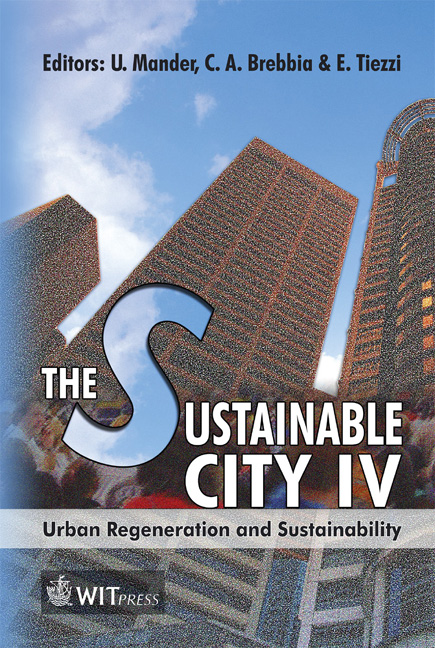Can Elevated Pedestrian Walkways Be Sustainable?
Price
Free (open access)
Transaction
Volume
93
Pages
10
Published
2006
Size
289 kb
Paper DOI
10.2495/SC060281
Copyright
WIT Press
Author(s)
J. Rotmeyer
Abstract
In most North American cities, taking pedestrians away from the street level potentially kills the street life. Raised walkways perform as lines connecting otherwise disconnected urban islands together, but fail quickly where pedestrian density is not high enough to sustain both levels. The networked connectivity acts not only as a public space linking together the built environment, but also distances pedestrians from vehicular pollution while redistributing the density of the ground layer. This paper looks specifically at how Hong Kong is able to sustain such a unique phenomenon facilitating permeability accentuated through a network of elevated walkways when most North American cities fail to function successfully for various reasons. It concludes by demonstrating how elevated walkways have been utilized for years; yet still project a visionary idea for future sustainable urban design. Keywords: sustainability, elevated pedestrian walkway, urban layering, pedestrian movement. 1 Introduction Sustainability is a concept developed to maintain social, economic, and environmental needs both now and in the future, to preserve for infinite generations. Hong Kong and several North American cities developed elevated walkway networks integrating human activity with the built environment. While the driving force behind Hong Kong’s pedestrian walkways was efficiency and overcrowding, in Minneapolis and Calgary it was the extreme cold climate. Elevated networks add a sense of security and comfort, allowing a continuous flow of movement without interruption from vehicular traffic, stop lights and pollution. Pedestrian density is high enough in Hong Kong to support
Keywords
sustainability, elevated pedestrian walkway, urban layering, pedestrian movement.





